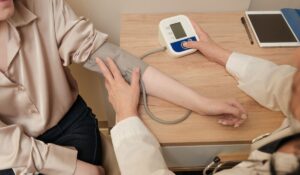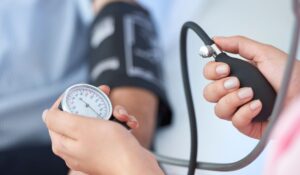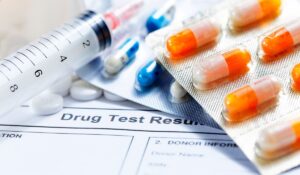What Is 9-Hydroxyrisperidone?
9-hydroxyrisperidone is a metabolite of the medicine risperidone. A metabolite is what your body makes after it breaks down a medication. Your liver changes risperidone into 9-hydroxyrisperidone. This metabolite is also known as paliperidone, which is an antipsychotic used in psychiatry to help people with schizophrenia and other mental health conditions. Reviewed by Lynk Diagnostics.
- Risperidone → body breaks it down → 9-hydroxyrisperidone (paliperidone)
- Doctors sometimes measure this metabolite to check the concentration of the medicine in the body. This can be part of therapeutic drug monitoring.
Can It Show Up on a Drug Test?
Yes, 9-hydroxyrisperidone can show up on a drug test, but it depends on the type of test. Not all tests look for it. Some basic workplace tests do not check for antipsychotic medicines. But more advanced tests, or tests ordered by a medical team, may look for risperidone and its metabolite on purpose.
Why Would a Test Look for It?
There are a few reasons a lab might look for 9-hydroxyrisperidone:
- To check treatment adherence: Are patients taking their medicine as prescribed?
- To explain positive or unexpected results in a broader screening panel.
- To support therapy planning in psychiatry and medicine.
- To collect data for health and safety in a rehab or laboratory setting.
At Lynk Diagnostics, a drug testing center dedicated to rehab facilities, clinicians can request targeted testing for risperidone and 9-hydroxyrisperidone when it matters for care.
What Kinds of Drug Tests Might Detect It?
Urine Drug Tests
Many tests start with urine because it is easy to collect. Basic point-of-care immunoassay strips often look for common classes like amphetamines, opioids, or benzodiazepines. These simple screens may not include antipsychotics. However, a lab-based urine test can be set up to look for 9-hydroxyrisperidone if the doctor requests it.
Blood or Plasma Tests
A medical team may use blood to measure the concentration of the drug and its metabolite. This is helpful for therapeutic drug monitoring to be sure the dose is in a helpful range.
Confirmatory Laboratory Methods
When a screening test is positive or unclear, labs often use high-tech tools to confirm:
- Mass spectrometry (often paired with chromatography) can identify 9-hydroxyrisperidone very accurately.
- These methods look at the exact chemical fingerprint of the drug and metabolite, even in very small amounts.
- Advanced methods can be done on urine, blood, or other liquid samples handled in the laboratory.
How Long Can 9-Hydroxyrisperidone Be Detected?
Detection time varies by person. It depends on dose, how fast someone’s body processes medicine, kidney function, and the type of drug test used.
- Urine: often detects for longer because metabolites leave the body through urine.
- Blood: shorter window, more about current concentration.
- Hair (less common in clinical care): longest window, but usually not used for routine psychiatric treatment monitoring.
Remember: these are general ideas. Exact times vary. A lab like Lynk Diagnostics can help choose the right test and timing for your issue or question.
Will 9-Hydroxyrisperidone Cause a False Positive?
Basic immunoassay screens look for groups of drugs. Sometimes one medication can “cross-react” and trigger a positive when it should not. This is called a false positive. While many basic panels do not even check for antipsychotics, any unexpected results should be confirmed by mass spectrometry at a laboratory to avoid errors. Confirmatory testing removes most confusion.
Why Doctors Care About This Metabolite
Better Care in Psychiatry
In psychiatry, knowing the level of 9-hydroxyrisperidone can guide treatment:
- Is the dose too low?
- Is the concentration too high and causing side effects?
- Is the patient taking the medication as planned?
This is part of therapeutic drug monitoring, which uses data from tests to support mental health care.
Safety and Effectiveness
When caring for patients with schizophrenia or another disease, the care team wants the right balance: enough medicine to help symptoms, but not too much. Levels of risperidone plus 9-hydroxyrisperidone can show how the body is handling the dose.
How Labs Actually Detect It
Step 1: Screening
A first pass screening might use an immunoassay. This is a quick test using antibodies. It can flag samples for a closer look. Some immunoassays are designed to flag risperidone/paliperidone, but many standard workplace cups do not include them.
Step 2: Confirmation
If the screen is positive or if the doctor asks for a targeted test, the lab runs a confirmatory method—often liquid chromatography with mass spectrometry. This high-specificity approach can measure the concentration of both risperidone and 9-hydroxyrisperidone. It reduces mistakes and provides clear, trusted medical results.
What “In Vitro” Means
You may see the phrase in vitro in lab reports or research. It means “in glass” and refers to tests done outside the body, like in test tubes or analyzers. Most laboratory methods to measure 9-hydroxyrisperidone are in vitro tests.
What If I Have a Prescription?
If you are prescribed risperidone or paliperidone, tell the testing team before your drug test. Bring your prescription or a note from your provider. This helps the lab and the care team match results with your treatment plan. A positive for a prescribed medication is usually not a problem in a medical or rehab setting—especially when the purpose is safety and therapy, not punishment.
How Lynk Diagnostics Can Help
Lynk Diagnostics is dedicated to rehab facilities and supports clinicians and patients with:
- Thoughtful test selection (what to test and when)
- Clear data reports for medicine and metabolite levels
- Confirmatory mass spectrometry when needed
- Help interpreting results for treatment and therapy plans
Our goal is simple: support better health outcomes with accurate, timely information.
Common Situations and Clear Guidance
You are in treatment and want to show adherence
Your provider may order a urine test that includes risperidone and 9-hydroxyrisperidone. This shows you are taking your medication as planned. Confirmatory testing with mass spectrometry can provide exact concentration numbers for therapeutic drug monitoring.
You had an unexpected positive
Ask if the lab used a confirmatory test. Immunoassay screening can sometimes give positive results that need confirmation. A lab report with mass spectrometry values is the gold standard to sort out any issue.
You switched medicines
If you moved from risperidone to paliperidone (or vice versa), the lab can still detect related compounds. Tell your provider and the lab which medication and dose you take now. This helps them interpret test data correctly.
What the Results Might Say
- Detected: 9-hydroxyrisperidone found.
- Not Detected: none found above the test’s cut-off.
- Quantitative Result (e.g., ng/mL): gives the concentration, useful for therapeutic drug monitoring.
- Interpretation: the lab may add comments to help the care team connect the results to treatment goals.
Tips for Patients and Families
- Keep a simple list of all your medication(s) and dose(s).
- Share the list with your care team and the testing staff.
- Ask if the test is a quick screening (immunoassay) or a confirmatory mass spectrometry test.
- If you see words you don’t know—like “metabolite,” “in vitro,” or “concentration”—ask the team to explain. It’s your right to understand your care.
Science Corner (Kept Simple)
- Risperidone is changed in the body by enzymes into 9-hydroxyrisperidone.
- Because this metabolite is active (it works like the parent drug), providers care about both.
- Laboratory instruments separate chemicals in a liquid sample and weigh them with mass spectrometry to tell them apart with high accuracy.
- Research and in vitro studies help set test cut-offs and understand how long the metabolite stays in the body. This science supports safer medicine use and better treatment plans.
When to Talk to Your Doctor
- You feel your dose is not working or is causing side effects.
- Your results are surprising or you got a positive you don’t understand.
- You changed medication or missed doses and need advice.
- You have questions about therapeutic drug monitoring and what the numbers mean.
Your care team can use the test data to adjust your plan and support your mental health and overall health.
FAQs
Does 9-hydroxyrisperidone show up on a drug test?
Yes, it can, especially in lab-based tests that are designed to detect risperidone and its metabolite. Basic cups may not include antipsychotics, but confirmatory mass spectrometry can clearly detect it when requested by a clinician.
Is 9-hydroxyrisperidone the same as paliperidone?
They are the same chemical. Paliperidone is the generic name used as a medication. It is also the main metabolite of risperidone in the body.
How long will it stay in my urine?
It varies. Time depends on dose, kidney function, and your body’s processing. Urine often shows a longer window than blood. For exact guidance, your provider may order therapeutic drug monitoring through a laboratory like Lynk Diagnostics.
Can it cause a false positive on other tests?
Most antipsychotics are not targets on simple immunoassay cups, so false positive issues are uncommon. If a screening is positive or unclear, a confirmatory mass spectrometry test should be used to be sure.
Why would my doctor test for it?
To guide treatment, check concentration for the right dose, confirm adherence, and improve mental health therapy. Testing helps align data with symptoms for safer, more effective care.
Key Takeaways
- 9-hydroxyrisperidone can be found on the right drug test, especially lab-based tests ordered by a medical team.
- It matters in psychiatry because it reflects how your body handles risperidone/paliperidone.
- Mass spectrometry is the reliable way to confirm and measure the concentration.
- Sharing your medication list and dose helps the lab give the most useful results.
- Lynk Diagnostics supports rehab programs with accurate screening, confirmation, and clear reporting to improve treatment decisions.
If you need a focused test for risperidone and 9-hydroxyrisperidone, or help understanding your results, reach out to Lynk Diagnostics. We’re here to turn complex lab data into clear steps for better health.








